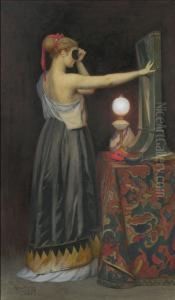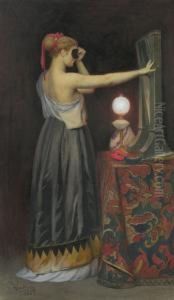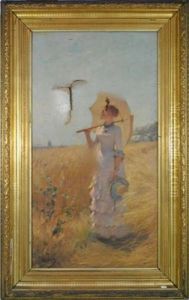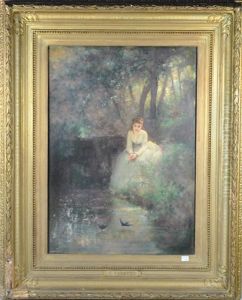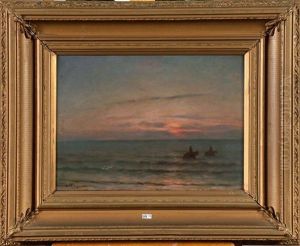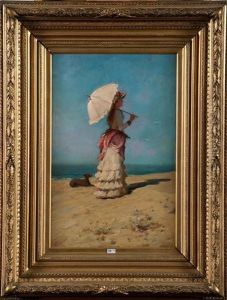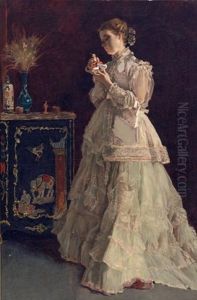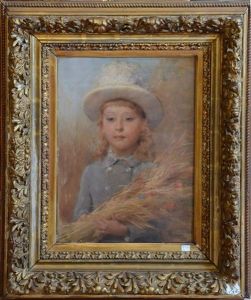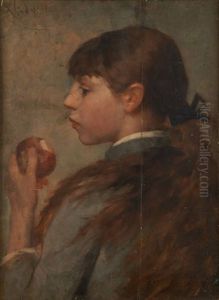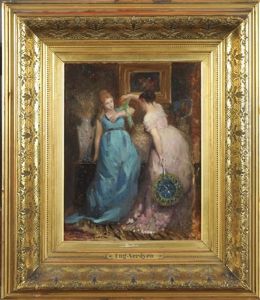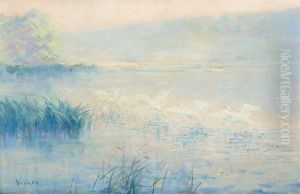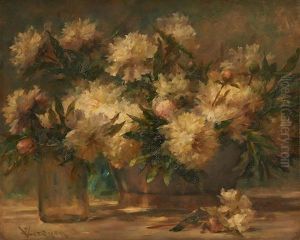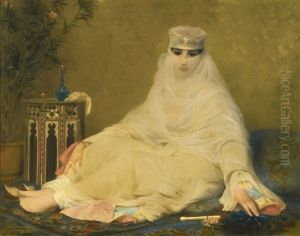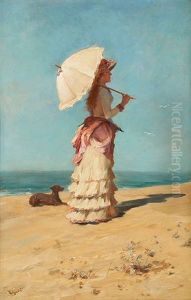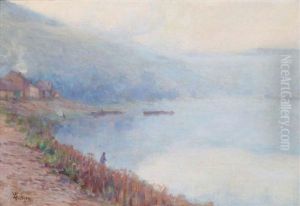Eugene Verdyen Paintings
Eugène Joseph Verboeckhoven, known as Eugène Verdyen, was a Belgian artist born on May 9, 1848, in Schaerbeek, a district of Brussels, Belgium. He was part of a well-known family of artists; his father, Barthélemy Verboeckhoven, was a sculptor, and his uncle, Eugène Verboeckhoven, was a celebrated painter of animals, landscapes, and rural scenes. This artistic environment profoundly influenced Eugène Verdyen, guiding him toward a career in art from a young age. Despite this familial connection to art, Verdyen is often celebrated for his unique contributions to the art world, distinguishing himself from his relatives through his distinctive style and subjects.
Verdyen is best known for his work in watercolors, which displayed a remarkable sensitivity to light and color. He often depicted scenes of everyday life, landscapes, and cityscapes, imbuing them with a romantic and sometimes melancholic atmosphere. His approach to watercolor was innovative for his time, contributing to the medium's elevation in the hierarchy of the arts. Verdyen's technique involved a delicate handling of light and shadow, which allowed him to capture the transient moments of beauty in the mundane and the natural world. His works were celebrated for their poetic quality and their ability to evoke emotion, making him a significant figure in the Belgian art scene of the late 19th century.
Throughout his career, Verdyen exhibited his works in various salons and exhibitions, gaining recognition and accolades. He was a member of several artistic societies, including Les XX, a group of twenty Belgian painters, designers, and sculptors formed in 1883 with the aim of promoting new artistic developments. His association with this group placed him at the center of the avant-garde movement in Belgium, allowing him to interact with other prominent artists of the time and to stay abreast of the latest artistic trends and theories.
Eugène Verdyen's contribution to Belgian art is significant, not only for his mastery of watercolor but also for his role in the broader artistic movements of his time. He passed away on November 12, 1907, in Schaerbeek. Today, his works can be found in various museums and collections, where they continue to be appreciated for their beauty and emotional depth. Verdyen's legacy is that of an artist who was deeply attuned to the world around him, capable of capturing its fleeting moments with sensitivity and skill.
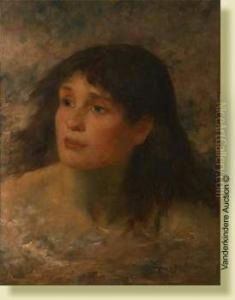
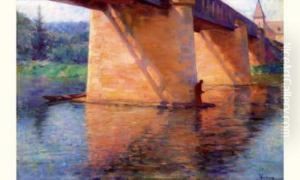
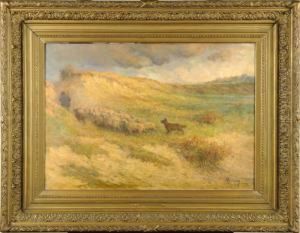
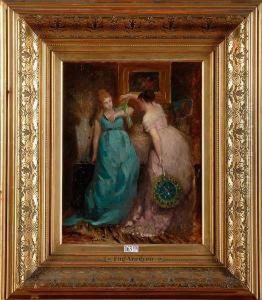
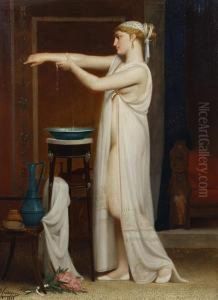
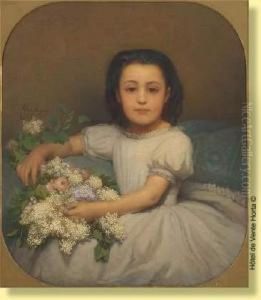
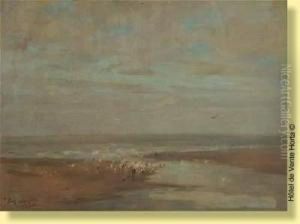
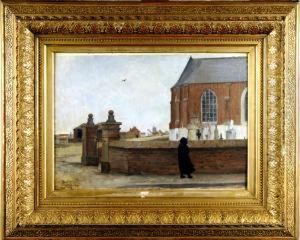
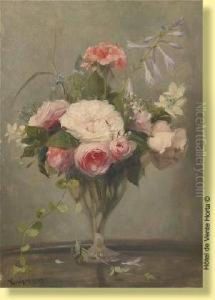
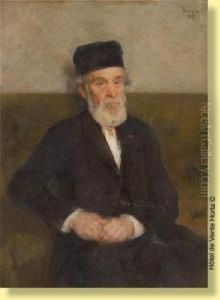
![[le Cimetiere De Blankenberge]](https://www.niceartgallery.com/imgs/1672327/s/eugene-verdyen-le-cimetiere-de-blankenberge-ac03ae0e.jpg)
